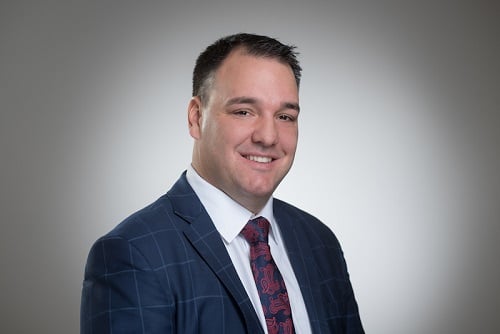With the ever-increasing challenges facing Canadians, it's up to advisors to provide better guidance

Rob Tetrault, portfolio manager and CEO of the Tetrault Wealth Advisory Group with National Bank Financial, shares his thoughts on the biggest challenges for Canadians, how portfolios haven’t changed with available products, and the increased importance of comprehensive financial advice.
What do you think are the most significant financial challenges that Canadians are facing today?
First off, there’s the issue of the affordability of Canadian housing in certain Canadian markets. Recent data shows that housing prices in two major markets (the GTA/Hamilton area and the Vancouver/Victoria area) have reached the unaffordable level for the majority of Canadians. The rest of the country continues to be able to afford to buy a house, but young couples in those markets need to be creative in order to become homeowners.
There’s also the issue of personal debt and how Canadians are managing that debt. Most pundits have shrugged off the personal debt equation in Canada in the past years given the fact that interest rates were at all-time lows, and interest payments were therefore manageable. I feel it’s no longer something we can ignore, as two interest rate hikes in 2017 have significantly increased the cost of carrying that debt. Should we see another 100 basis points rise in interest rates, many highly levered Canadians would feel the pinch and need to de-lever. Given the uncertainty of how a deleveraging situation would play itself out in Canada, I see this as a potential significant financial challenge.
Finally, all-time low interest rates have created portfolios that can no longer generate enough returns in fixed-income portfolios. Consider a retiree who has been living off returns of GIC’s or very defensive bonds for the past 20 years. That individual has seen his returns go down from 7.5% to 2.5%, effectively cutting their income by two thirds. Their choices are now to either dip into their capital (often not feasible), accept a lower level of income, increase the risk in their portfolio, or look to alternatives. None of those options are that appealing. Most Canadians don’t fully understand alternative investing, and those who chose to increase the risk in their portfolios often go into that decision with a high level of uneasiness.
Do you think most advisors have been able to keep pace with the demands and needs of the public? Why?
I feel that although the products being released in the last few years have certainly kept pace or even outpaced the demands of the public, most advisors haven’t figured out the best way to use those products to meet those clients’ demands. An example of this is the vast expansion in electronically traded products such as ETFs. There are now approximately 500 different ETF products, each catering a very different clientele. Some of them cater to niche markets, some are leveraged, some are active, and some are quantitative based. So while the product line has dramatically increased to keep pace with the demands of the investors, most advisors have not altered their portfolio management style to reflect the new needs of those same clients.
We see a lot of statements from competitor advisors, and we often see statements from other clients where advisors have not made a material change to the portfolio in ages and clients continue to own the same portfolio they’ve always owned. When I see that, I get the sense that some advisors might think that evolving with the changing needs of clients can be difficult and time-consuming. Staying on top of all aspects of portfolio management theory and changing asset classes can also be difficult. I don’t feel that advisors have kept pace with this aspect of our practice.
From your standpoint, what else could financial professionals do to help Canadians with their financial issues?
I think that with every passing day, it becomes more and more important for advisors to embrace the concept of holistic wealth management in order to better serve all clients. In my view, it has become table stakes for advisors to offer estate planning, financial planning, tax planning and insurance planning (amongst other offerings). With an aging population and a significant transfer of wealth already under way from the baby boomer generation to the Generation Xers, planning is at the forefront of client’s minds. I believe that the old days of adding value strictly through portfolio management are behind us. The value add must now come from more than simply stock selection and asset allocation.
Additionally, given what’s happening in other jurisdictions, I think it’s become abundantly clear that the future of all the investment advice industry is the concept of fiduciary obligation. In my view, it’s the highest duty of care that a professional can owe a client, and given the fact that in Canada, it’s present in other client-professional relationships, it needs to come to our industry. I believe that the fiduciary obligation will lead to honest conflict-free advice with a transparent fee structure. In my view that’s a significant step forward from what most advisors are currently doing.
Related stories:
Are your clients ignoring market risks?
The overlooked importance of value
What do you think are the most significant financial challenges that Canadians are facing today?
First off, there’s the issue of the affordability of Canadian housing in certain Canadian markets. Recent data shows that housing prices in two major markets (the GTA/Hamilton area and the Vancouver/Victoria area) have reached the unaffordable level for the majority of Canadians. The rest of the country continues to be able to afford to buy a house, but young couples in those markets need to be creative in order to become homeowners.
There’s also the issue of personal debt and how Canadians are managing that debt. Most pundits have shrugged off the personal debt equation in Canada in the past years given the fact that interest rates were at all-time lows, and interest payments were therefore manageable. I feel it’s no longer something we can ignore, as two interest rate hikes in 2017 have significantly increased the cost of carrying that debt. Should we see another 100 basis points rise in interest rates, many highly levered Canadians would feel the pinch and need to de-lever. Given the uncertainty of how a deleveraging situation would play itself out in Canada, I see this as a potential significant financial challenge.
Finally, all-time low interest rates have created portfolios that can no longer generate enough returns in fixed-income portfolios. Consider a retiree who has been living off returns of GIC’s or very defensive bonds for the past 20 years. That individual has seen his returns go down from 7.5% to 2.5%, effectively cutting their income by two thirds. Their choices are now to either dip into their capital (often not feasible), accept a lower level of income, increase the risk in their portfolio, or look to alternatives. None of those options are that appealing. Most Canadians don’t fully understand alternative investing, and those who chose to increase the risk in their portfolios often go into that decision with a high level of uneasiness.
Do you think most advisors have been able to keep pace with the demands and needs of the public? Why?
I feel that although the products being released in the last few years have certainly kept pace or even outpaced the demands of the public, most advisors haven’t figured out the best way to use those products to meet those clients’ demands. An example of this is the vast expansion in electronically traded products such as ETFs. There are now approximately 500 different ETF products, each catering a very different clientele. Some of them cater to niche markets, some are leveraged, some are active, and some are quantitative based. So while the product line has dramatically increased to keep pace with the demands of the investors, most advisors have not altered their portfolio management style to reflect the new needs of those same clients.
We see a lot of statements from competitor advisors, and we often see statements from other clients where advisors have not made a material change to the portfolio in ages and clients continue to own the same portfolio they’ve always owned. When I see that, I get the sense that some advisors might think that evolving with the changing needs of clients can be difficult and time-consuming. Staying on top of all aspects of portfolio management theory and changing asset classes can also be difficult. I don’t feel that advisors have kept pace with this aspect of our practice.
From your standpoint, what else could financial professionals do to help Canadians with their financial issues?
I think that with every passing day, it becomes more and more important for advisors to embrace the concept of holistic wealth management in order to better serve all clients. In my view, it has become table stakes for advisors to offer estate planning, financial planning, tax planning and insurance planning (amongst other offerings). With an aging population and a significant transfer of wealth already under way from the baby boomer generation to the Generation Xers, planning is at the forefront of client’s minds. I believe that the old days of adding value strictly through portfolio management are behind us. The value add must now come from more than simply stock selection and asset allocation.
Additionally, given what’s happening in other jurisdictions, I think it’s become abundantly clear that the future of all the investment advice industry is the concept of fiduciary obligation. In my view, it’s the highest duty of care that a professional can owe a client, and given the fact that in Canada, it’s present in other client-professional relationships, it needs to come to our industry. I believe that the fiduciary obligation will lead to honest conflict-free advice with a transparent fee structure. In my view that’s a significant step forward from what most advisors are currently doing.
Related stories:
Are your clients ignoring market risks?
The overlooked importance of value



